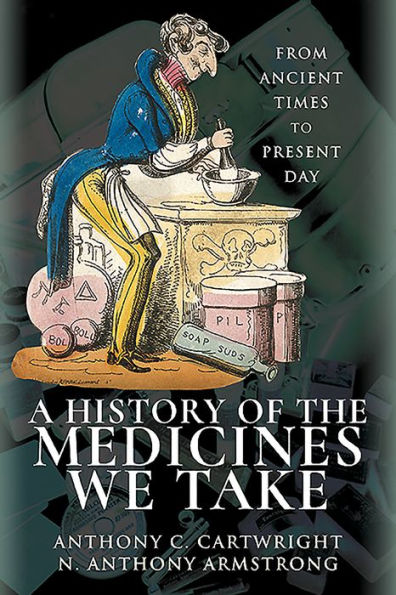A History of the Medicines We Take: From Ancient Times to Present Day
Remedies the gap in the market for a guide to the history of the medicines we take not just the drugs they contain.A History of the Medicines We Take gives a lively account of the development of medicines from traces of herbs found with the remains of Neanderthal man, to prescriptions written on clay tablets from Mesopotamia in the third millennium BC, to pure drugs extracted from plants in the nineteenth century to the latest biotechnology antibody products.The first ten chapters of the book in PART ONE give an account of the development of the active drugs from herbs used in early medicine, many of which are still in use, to the synthetic chemical drugs and modern biotechnology products. The remaining eight chapters in PART TWO tell the story of the developments in the preparations that patients take and their inventors, such as Christopher Wren, who gave the first intravenous injection in 1656, and William Brockedon who invented the tablet in 1843. The book traces the changes in patterns of prescribing from simple dosage forms, such as liquid mixtures, pills, ointments, lotions, poultices, powders for treating wounds, inhalations, eye drops, enemas, pessaries and suppositories mentioned in the Egyptian Ebers papyrus of 1550 BCE to the complex tablets, injections and inhalers in current use. Today nearly three-quarters of medicines dispensed to patients are tablets and capsules. A typical pharmacy now dispenses about as many prescriptions in a working day as a mid-nineteenth- century chemist did in a whole year.
"1136483644"
A History of the Medicines We Take: From Ancient Times to Present Day
Remedies the gap in the market for a guide to the history of the medicines we take not just the drugs they contain.A History of the Medicines We Take gives a lively account of the development of medicines from traces of herbs found with the remains of Neanderthal man, to prescriptions written on clay tablets from Mesopotamia in the third millennium BC, to pure drugs extracted from plants in the nineteenth century to the latest biotechnology antibody products.The first ten chapters of the book in PART ONE give an account of the development of the active drugs from herbs used in early medicine, many of which are still in use, to the synthetic chemical drugs and modern biotechnology products. The remaining eight chapters in PART TWO tell the story of the developments in the preparations that patients take and their inventors, such as Christopher Wren, who gave the first intravenous injection in 1656, and William Brockedon who invented the tablet in 1843. The book traces the changes in patterns of prescribing from simple dosage forms, such as liquid mixtures, pills, ointments, lotions, poultices, powders for treating wounds, inhalations, eye drops, enemas, pessaries and suppositories mentioned in the Egyptian Ebers papyrus of 1550 BCE to the complex tablets, injections and inhalers in current use. Today nearly three-quarters of medicines dispensed to patients are tablets and capsules. A typical pharmacy now dispenses about as many prescriptions in a working day as a mid-nineteenth- century chemist did in a whole year.
34.95
Out Of Stock
5
1

A History of the Medicines We Take: From Ancient Times to Present Day
272
A History of the Medicines We Take: From Ancient Times to Present Day
272Related collections and offers
34.95
Out Of Stock

Product Details
| ISBN-13: | 9781526724038 |
|---|---|
| Publisher: | Pen and Sword |
| Publication date: | 08/17/2020 |
| Pages: | 272 |
| Product dimensions: | 6.00(w) x 9.25(h) x 1.10(d) |
About the Author
From the B&N Reads Blog
